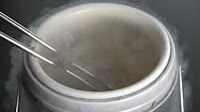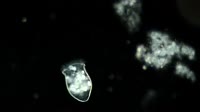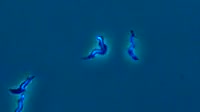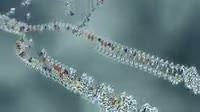Animation of a model of a molecule of sodium stearate (C18H35OONa), a common soap, showing its polarity. Sodium stearate has a polar end comprising the acid group with its two oxygen atoms, and a long non-polar hydrocarbon tail. Polarity is a property of a molecule that has an uneven distribution of electric charge around it, giving it two or more poles of opposite charge. Here, red areas have a slight negative charge, non-polar areas are green, and the sodium ion is purple. With an asymmetric molecule like sodium stearate, the negative part of the molecule can interact with other polar molecules, like water, while the long non-polar carbon tail can interact with other non-polar substances such as fats. This makes it very useful as a soap, as the non-polar (hydrophobic) tail can attract and bind to fats and grease, while the polar (hydrophilic) heads are attracted to water. This allows fats to be dissolved and washed away in water. Sodium stearate is the most common soap, and is used in a wide variety of products.
Details
WebID:
C01786732
Clip Type:
RM
Super High Res Size:
1920X1080
Duration:
00:00:10.000
Format:
QuickTime
Bit Rate:
24 fps
Available:
download
Comp:
200X112 (0.00 M)
Model Release:
NO
Property Release
No













 Loading
Loading